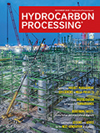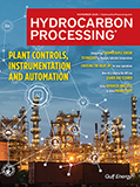Corrosion
Operations: Maximizing the opportunity of discounted crudes
As the oil and gas industry adjusts to a business environment in which crude oil prices will likely remain lower for longer, refiners continue looking for ways to maximize their profitability.
Case histories of amine plant equipment corrosion problems–Part 1
Lost production from corrosion costs the oil and gas industry more than $1 B/yr.1
Heavy crude oil processing design and reliability
Revamping refineries to process heavier crude slates goes well beyond the requirements to meet equipment performance dictated by a shift in the quantity of lighter product yields to heavier products.
Process safety incidents involving simultaneous operations
Some process safety incidents occur as the result of simultaneous or sequential occurrences of operations or activities that interfere or clash with each other.
Design atmospheric aboveground storage tanks for accident prevention
The design and construction of oil, gas and petrochemical facilities is continuously improving, as increasing compliance with ever-changing codes and standards, such as the American Petroleum Institute (API) and the National Fire Protection Association (NFPA), is resulting in fewer atmospheric above-ground storage tank (AAST) accidents.
Refining: Use of Alloy 400 for hydrofluoric acid corrosion in a refinery alkylation unit
Alkylation units can be based on sulfuric acid or hydrochloric acid as a catalyst.
HF alkylation conversion is finally within reach—Part 1
Because of its clean-fuel properties (paraffinic, high octane, low vapor pressure and very low sulfur), alkylate is considered one of the most desired components in the gasoline pool.
Carburization inspection robots for radiant tubes inside ethylene cracking furnaces
In an olefins plant, the reliability of ethylene cracking furnaces is one of the deciding factors used to indicate whether or not the plant can be operated at its design productivity.
Does your control valve talk?
Pneumatic operated control valves (POCVs) are consistently the most used control final element for process control across most industries—in some cases, they are also part of the safety instrumented systems (SISs) layer.
Revamp fired heaters with a common air-preheating system to increase capacity
In any process plant, fired heaters are generally considered to be one of the most optimally designed pieces of equipment.

- Indian Oil buys first Colombian oil under Ecopetrol contract 12/31
- Ukrainian drone attack sparks fire, damages equipment at Tuapse refinery 12/31
- Chile's $2.5-B Volta green ammonia project wins environmental permit 12/31
- China begins issuing second batch of 2026 crude import quotas to refiners 12/31
- EIA: U.S. crude, fuel inventories rose in the week ended December 19 12/30
- Ghana's Tema oil refinery restarts after 9-yr shutdown 12/30




